The 2nd generation Toyota Tacoma is one of the most popular pickup trucks on the used market. Like any other Toyota truck, they’re sought after and hold their value very well.
The Tacoma is more popular than ever now due to the increased popularity of overlanding, camping, and off-roading.
People want to get outside and explore and the Tacoma is a fantastic platform to build your adventure rig on.
Table of Contents
2nd Generation Toyota Tacoma overview
The 2nd gen Tacoma is considered a midsize pickup truck. It had a long lifespan and was sold from 2005 to 2015. These trucks are the full-size Tundra’s little brother and have carved out their own spot in the market.
Their size makes them very useful as pickup trucks while being easy to maneuver and park in tight spaces. They’re also more fuel efficient than the Tundra.
With a simplistic style and design, the Tacoma is a pretty basic truck. For many people, that’s the whole draw to them. They’re reliable, nimble, easy to drive, very capable off-road, and quite comfortable. These are all important characteristics when choosing an adventure vehicle.
Tacomas are known to last for many hundreds of thousands of miles without breaking a sweat and because of that, hold their value in the used market very well.
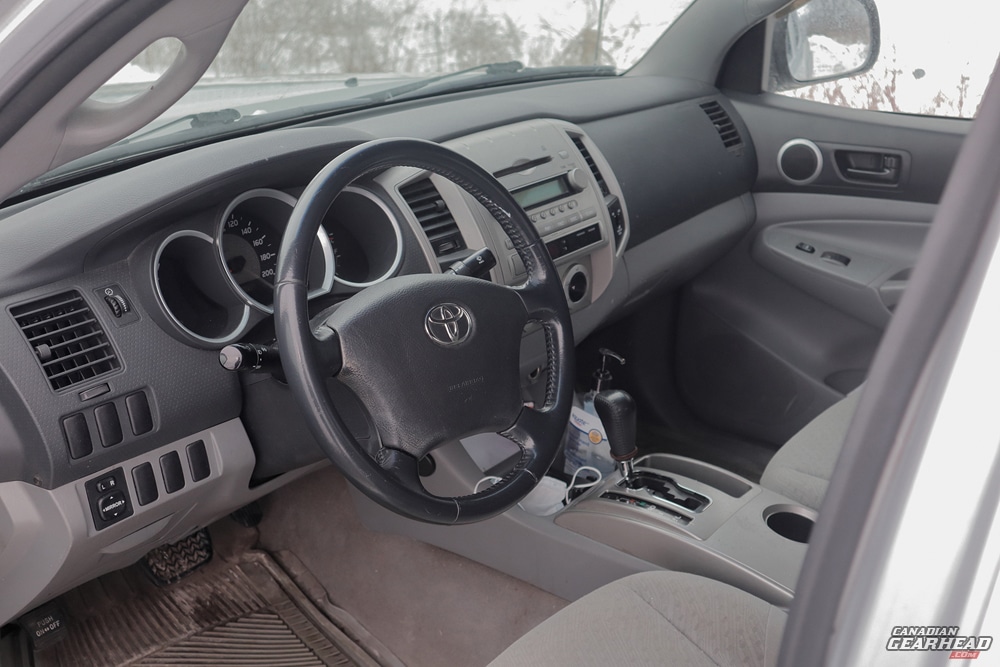
2nd gen Tacoma models and trim levels
There are a total of 18 configurations for the Toyota Tacoma. There are options for cab size, bed size, engine, and transmission. Each are also available in different trim levels.
Tacoma cab options
There are 3 different cab options for the 2nd gen Tacoma. Regular cab, Access cab, and Double cab. These names can be confusing when comparing them to the Toyota Tundra options. The Access cab is what many would consider an “extended cab” with a small rear seat area and swing out doors.
The Double cab is more of a “crew cab” with a full set of rear doors and more rear seat room. This is confusing because the Double cab on the Tundra is the smaller option while the one with the full rear doors is called a CrewMax.
| Regular Cab | Medium Cab | Large Cab | |
|---|---|---|---|
| Tacoma | Regular | Access Cab | Double Cab |
| Tundra | Regular | Double Cab | Crew Max |
Tacoma bed length options
All 2nd gen Tacomas have plastic beds (not metal) available in 2 different sizes – short (5 foot) and long (6 foot). The tie-downs found in the bed are rated to hold up to 220 lbs.
The Regular cab was only available with a short bed while the Access cab was only sold with the long bed. The Double cab offered the option of either a short or long bed.
Tacoma trim levels
The different trim levels of the Toyota Tacoma can be confusing as well. The problem is that there are a lot of dishonest owners/dealers that attempt to make a truck look like a higher model than it is by changing parts or adding decals to the bedsides.
After quite a bit of digging online, this is the explanation of each trim level I was able to come up with.
Base model
This is exactly what it sounds like – a stripped down, bare bones Tacoma. The easiest way to identify a base model is by its black bumpers and fender flares. It also comes with steel wheels. Canadian base models offered power door locks, power windows, and power mirrors.
SR5
The next step up from a Base model is the SR5. These came with a few extra options like cruise control, intermittent wipers, keyless entry, power windows, a sliding rear window, and optional fog lights. The SR5 also had color-matched fender flares and a chrome grille and rear bumper.
TRD Sport
The TRD Sport model starts life as an SR5 model and adds a cosmetic hood scoop (non-functional), color-matched bumpers, smoked headlights, color-matched door handles, sport seats, steering wheel radio controls, and 17″ wheels. They had a sticker on the bedside that said “TRD Sport” on it.
TRD Offroad
The TRD Offroad also starts out as an SR5. It’s a bit more capable in the dirt thanks to an electronic rear locker, beefier skid plates, Bilstein shocks, and BF Goodrich all-terrain tires. Much like the Sport, these have a sticker on the bedside that says “TRD Offroad” on it.
Limited
The Limited model of the Tacoma came out in 2013 and was meant to be more luxurious. It offered things like heated leather seats, 18″ wheels, optional navigation, JBL audio, HomeLink, and chrome trim.
X-Runner
The X-Runner was Toyota’s idea of a sporty truck. It featured the same 4.0 V6 and 6-speed manual transmission as the other Tacomas so it really wasn’t any faster. Toyota did change the rear end gearing but aside from that, the differences were all for handling and cosmetic purposes.
The name “X-Runner” refers to the X brace that was added to stiffen the chassis. Other braces were added as well. The suspension sat a bit lower with a set of Bilstein shocks and the trucks appeared to be even lower due to the skirt package. X-Runners also had a hood scoop and sportier wheels and tires.
TRD Pro
The TRD Pro Tacoma came out in the last model year (2015). This was meant to be a true off-road model. Some people laughed at the regular TRD Offroad model being nothing more than a rear locker and a sticker on the side. The Pro took things to the next level.
TRD Pros are lifted 2″ upfront and feature TRD tuned Bilstein suspension with remote reservoir shocks. At the time, the Ford Raptor was the only other truck to offer off-road suspension this aggressive.
Other features of the TRD Pro were 16″ simulated bead lock wheels with BF Goodrich all-terrain tires, a hood scoop, black housing headlights, a unique TRD Pro grille with a retro style Toyota logo, black badges, and a TRD exhaust.
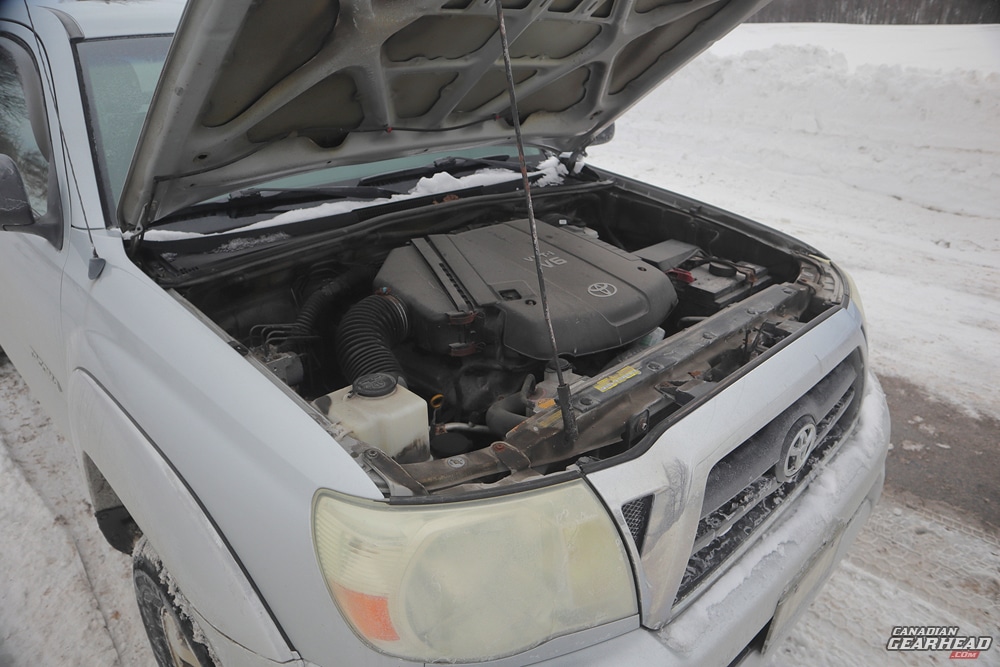
2nd Gen Tacoma engine and transmission options
There were 2 engines available in the 2005-2015 Tacoma – a 2.7L 4 cylinder and a 4.0L V6.
2.7L 4-Cylinder
The “2TR-FE” 2.7L was all new for the Tacoma and was rated at 159 hp and 180 ft-lbs. Some believe it’s a bit too weak for use in a pickup truck and becomes easily overloaded. This engine is used around the world in other models like the Land Cruiser Prado, Hilux, and Fortuner. It uses an iron block and forged connecting rods.
4.0L V6
The “1GR-FE” 4.0L was carried over from other models and offered 236 hp and 266 ft-lbs. It was also used in the Land Cruiser, 4runner, Tundra, and FJ Cruiser. It has an aluminum block and forged connecting rods, just like the 4 cylinder.
Both engines use a timing chain so there’s no need for changing a belt every 100,000 miles. They’re also both considered to be very reliable which is no surprise in a Toyota truck.
As for which engine is best, it really comes down to the way you intend to use your truck. The 2.7L is more fuel efficient but if you plan to do heavy towing and hauling, the performance of the 4.0 will come in handy.
Transmissions
There were 4 different transmissions available in the 2nd gen Tacoma. A 4 speed or 5-speed version was available in automatic and a 5 speed or 6 speed was available as manuals.
All of these transmissions were considered to be very reliable although there were some complaints about very early model 6-speeds.
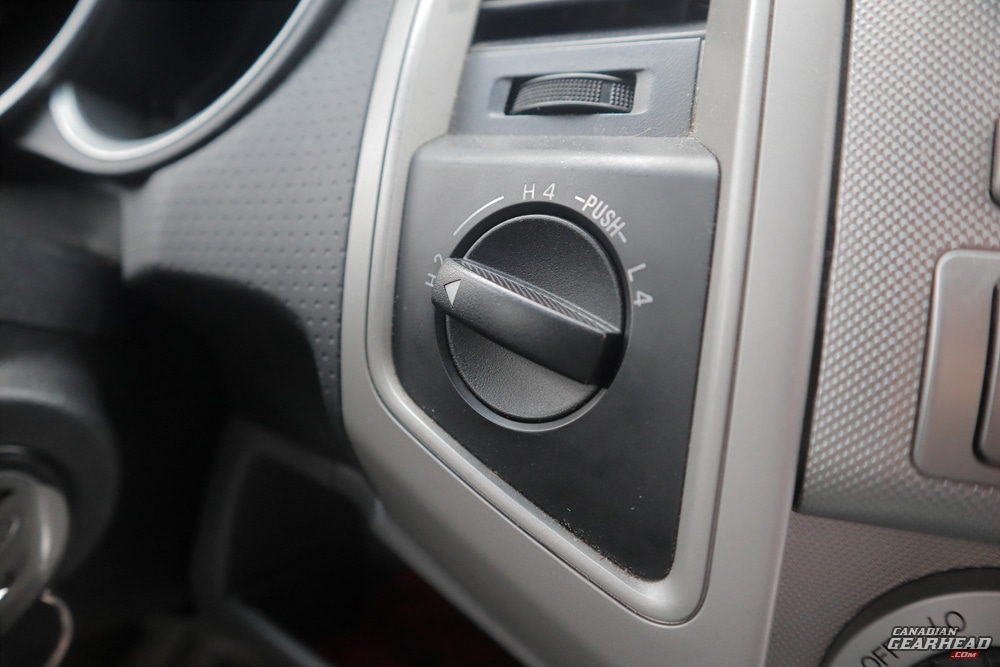
Tacoma 4×4 system
2nd gen Tacomas are available in both 2WD and 4WD models. The 4WD versions work similarly to the rest of the Toyota trucks (and in some cases, share parts with them). Unlike the 4th gen 4runners, the engine choice doesn’t affect the type of 4×4 system – in the Tacoma’s case, they’re all the same.
There are 3 settings on the knob found on the dash: H2, H4, and L4. This translates to 2WD, 4Hi, and 4Lo. Engagement of these options is slightly different. To shift from 2WD to 4Hi, simply switch it to the desired position (as long as you aren’t going faster than 60 MPH).
Shifting back from 4Hi to 2WD can be done at any speed. With both of these, it’s often best to take your foot off the gas briefly to reduce the load on the drivetrain.
Shifting from 4Hi to 4Lo is a different procedure. You need to be traveling less than 3 MPH or stopped. You also need to shift it into neutral in order for it to engage. This is the same when shifting into or out of 4Lo.
As with all electronically controlled 4×4 systems, it’s important to exercise your Tacoma’s 4×4 at least once a month. Failure to do so can cause the actuator to seize. It’s truly a matter of “use it or lose it”.
Head over to our complete article on using your Tacoma’s 4WD system if you’d like to learn more!
Tacoma Suspension
All Tacomas have the same suspension design. It’s been the same forever because it’s simple and it works. Tacomas have independent front suspension and a solid rear axle.
The front suspension is shared with other trucks like the FJ Cruiser and 4runner. Unlike the other trucks though, the rear of the Tacoma uses leaf springs rather than coils.
Perhaps one of the most popular modifications for Toyota Tacomas is some type of lift or suspension upgrade. There are a ton of options available in the aftermarket world from cheap spacers to tall drop bracket lifts and long travel desert setups.
An interesting note: The Tacoma has continued to use drum brakes in the rear from the very first model year to the current 2023 model. Find out why the Tacoma has drum brakes here:
Towing Capacity
The Tacoma has a range of towing ratings. There are a few factors that will impact how much weight it’s able to tow.
2.7L Tacoma towing capacity
The tow rating for all 4 cylinder Tacoma models is 3,500 lbs. This is because none of them were sold with the factory towing package. You might find one with a trailer hitch but that doesn’t mean it has the full package.
The lower tow rating suits the 4 cylinder models because quite frankly, they don’t have the power and torque to be able to tow much more anyways. If you’re planning on towing and hauling with your truck, you’re going to want to find a V6 model.
4.0L Tacoma towing capacity
If a V6 Tacoma doesn’t have the factory towing package, the tow rating remains at 3,500 lbs. These had the package as an option though, which raised the capacity up to 6,500 lbs.
Even with the tow package, the V6 Tacomas aren’t known for being great tow rigs. They’re still a lightweight truck that gets thrown around by a lot of weight behind it. The rear leaf springs are soft and don’t respond well to a lot of payload or tongue weight.
If you’re going to be doing a lot of towing near the 6,500 lb limit (especially in terrain with a lot of hills), you’d be better off shopping for a full-size truck like the Tundra.
What’s included in the Tacoma’s factory towing package:
How do you tell if a Tacoma has the factory towing package or if someone just installed an aftermarket trailer hitch? There were a few things included in the package aside from the hitch itself: an oil cooler, transmission cooler, higher power alternator, and a bigger battery.
In some trucks, you can even find the extra wiring for a brake controller tied up and hidden behind the kick panel.
Toyota Tacoma payload
Payload for the 2nd gen Tacoma isn’t what you’d get from a larger truck. They’re rated for 1,260 lbs. It’s believed that the maximum weight rating for the tailgate in the lowered position is around 250 lbs.
Of course, many people have exceeded these ratings without any problems but this is what Toyota considers to be safe for the truck.
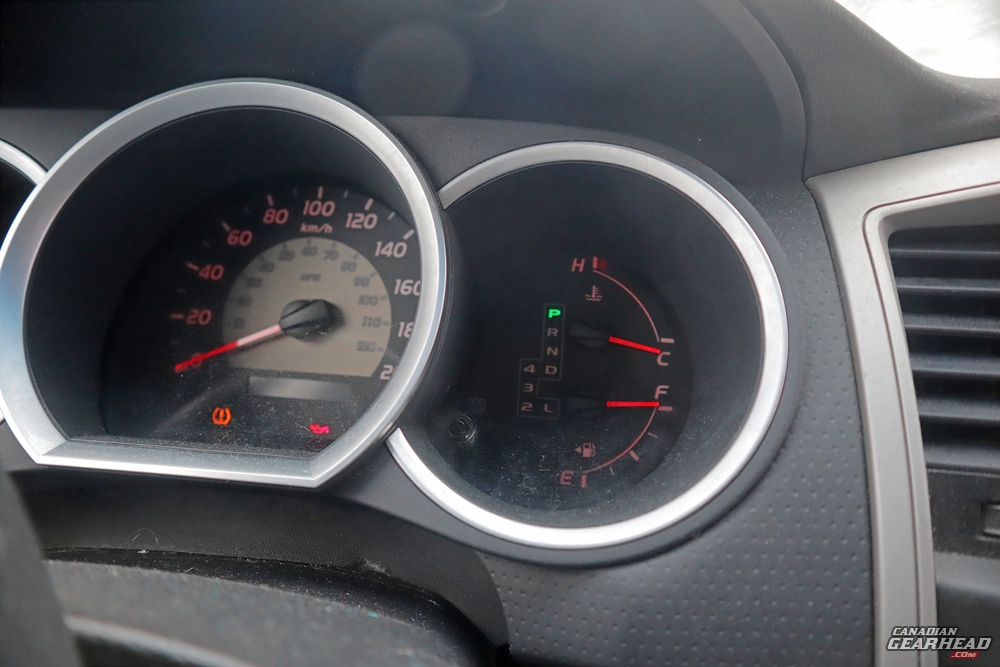
2nd Gen Tacoma fuel economy
While the Tacoma certainly won’t be confused with a hybrid, it’s also much more efficient than the Tundra. EPA ratings for fuel economy are as follows:
| 2.7L 4 Cylinder | 4.0L V6 | |
|---|---|---|
| 2WD Automatic | 19 MPG City 24 MPG Highway 21 MPG Combined | 17 MPG City 21 MPG Highway 19 MPG Combined |
| 2WD 5-Speed Manual | 21 MPG City 25 MPG Highway 22 MPG Combined | N/A |
| 2WD 6-Speed Manual | N/A | 16 MPG City 21 MPG Highway 18 MPG Combined |
| 4WD Automatic | 18 MPG City 21 MPG Highway 19 MPG Combined | 16 MPG City 21 MPG Highway 18 MPG Combined |
| 4WD 5-Speed Manual | 18 MPG City 20 MPG Highway 19 MPG Combined | N/A |
| 4WD 6-Speed Manual | N/A | 15 MPG City 19 MPG Highway 17 MPG Combined |
Shared platforms
The 2005-2015 Toyota Tacoma shares its platform with other models that Toyota considers the “120 Platform”. This is originally based on the Land Cruiser Prado which is sold overseas. The trucks included in this list are:
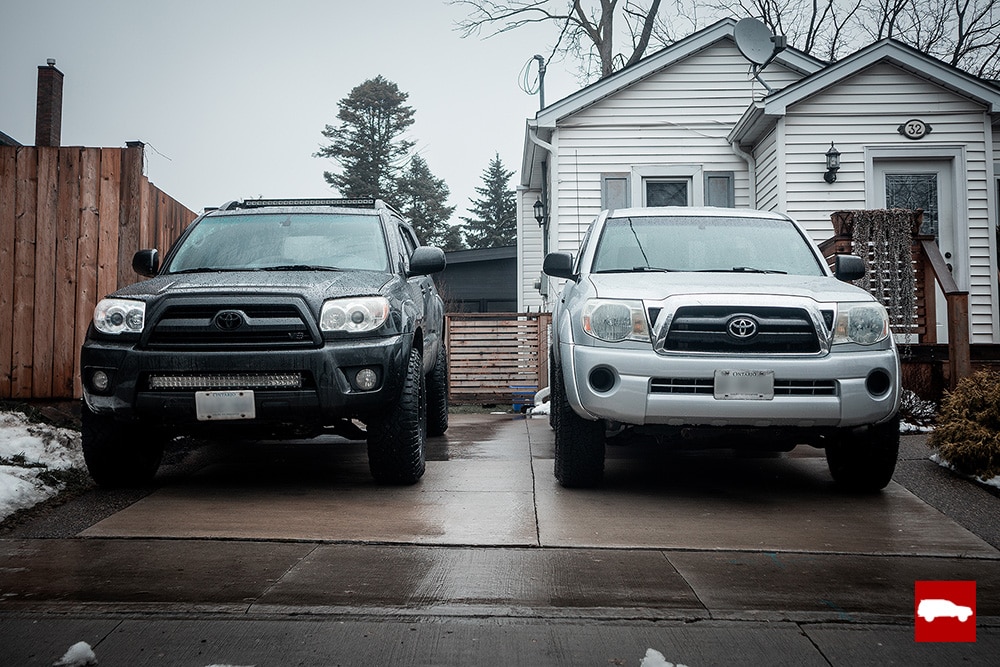
There are other trucks that share similar parts with the Tacoma. Both the 1st gen Tundra and 1st gen Sequoia have front suspension and wheels that can be swapped with the Tacoma.
The same goes for newer 5th gen 4runners and 3rd gen Tacomas. If you’re also considering a 4th gen 4runner, make sure to check out that buyers guide here:
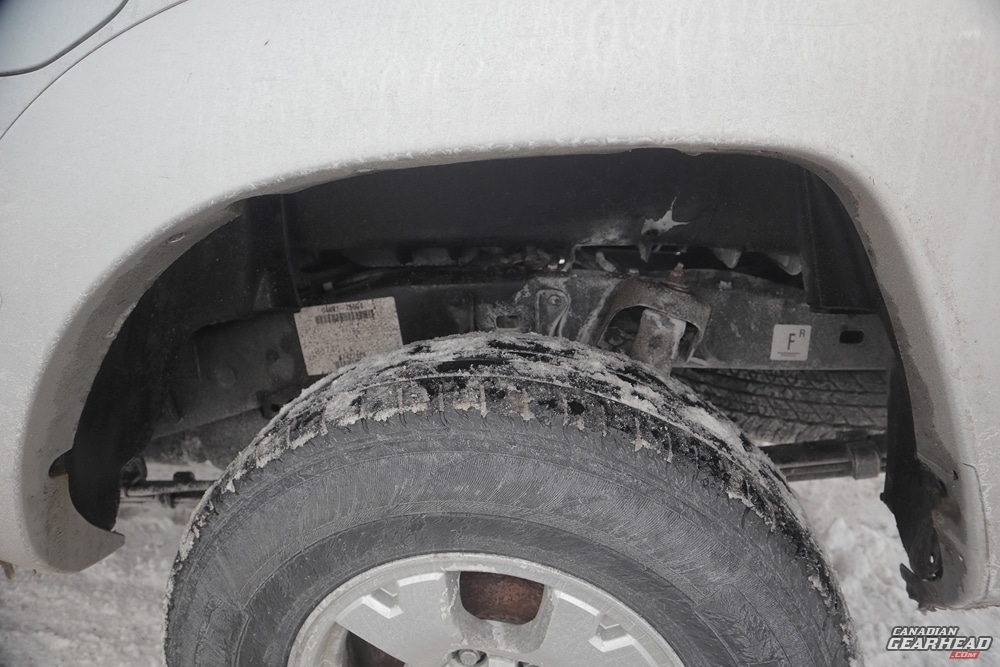
Common 2nd Gen Toyota Tacoma problems
Luckily the Toyota Tacoma is well known for being one of the most reliable pickup trucks on the planet. One look at the values of these trucks on the used market will prove that’s not a myth.
They are built incredibly well and can last easily for over 500,000 miles if you take care of maintenance and treat them right. No vehicle is completely immune to mechanical failures though, so here are a few things to watch out for.
I go over some of the Tacoma’s common problems in this video:
Rust
Rust is the number 1 killer of Toyota trucks. I can’t count how many times I’ve heard the phrase “it would have kept running forever if the body didn’t rust out of it!”
Living in a climate where road salt is used in the wintertime is extremely tough on vehicles. Toyota trucks tend to be even more vulnerable to rust in the winter. I wrote a post on keeping your Toyota from rusting here:
Toyota knew that the frame on the Tacoma was rusting prematurely and after a class action lawsuit, decided to offer free frame replacements for eligible owners. This is absolutely huge. To this day, I’ve never heard of a manufacturer doing this.
Toyota would pay for the parts and labor to swap your truck’s frame with a new one. The great thing about that is in many cases, old parts needed to be cut off due to the rust. That meant having to install brand new ones on the new frame. A lot of people ended up getting free leaf springs, brake lines, and sometimes even more.
If you can find a used Tacoma that has had the frame replaced, chances are that it’s a rock solid truck – even if it has higher mileage.
4×4 engagement issues
Like most 4WD trucks that are shifted electronically, there are some issues with the system. The 4×4 actuator is known for failing over time – the connections inside get worn out. Some owners have been able to take the actuator apart, clean it, and soldier the connections back together.
Sticky shifter
The linkage for the transmission gear selector can get sticky and in some cases, even frozen in place over time. This can be caused by a few different components and lubricating them is typically all that’s needed to cure the issue. I run through all of the items that require attention in the video below:
Squeaky or broken rear leaf springs
Squeaks from the leaf springs are common and can usually be fixed by oiling or greasing them. If the Tacoma is overloaded often, the springs can actually break. They don’t like to hold a lot of weight.
Air injection pump failure
This is a common failure among the Tacoma, V8 4runner, and Tundra models. The air injection pump is part of the complicated emissions system Toyota had to start using.
If they fail, they can get stuck in position (either open or closed) which can result in a check engine light and even limp mode. This can be an expensive fix although the system can be disabled with an aftermarket bypass.
Head gasket failure
Some early model 2nd gen Tacomas suffered from blown head gaskets. This was also common with the 4th gen 4runners with the same 1GR-FE V6 engine. The gasket was updated soon after and became much less of a problem going forward.
Climate control cutting out
There is a problem with the climate control functions being intermittent. The blower fan resistor tends to overheat and needs to be replaced. Some believe that a clogged cabin air filter can cause it to overheat.
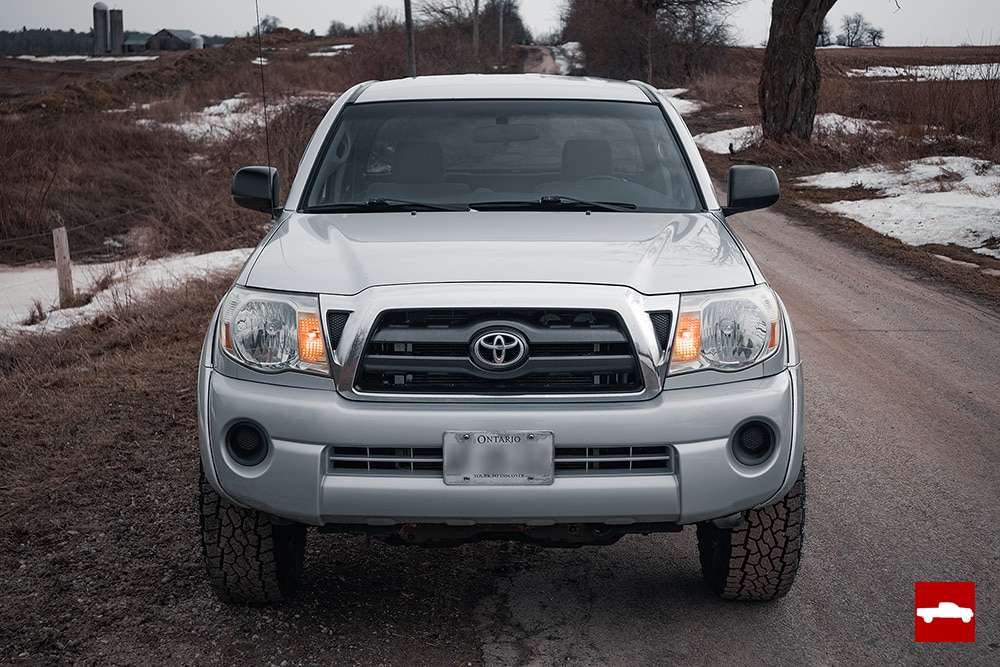
2nd Gen Tacoma year to year changes
With a 10 year lifespan, the 2nd gen Tacoma was bound to go through a few changes over the years. Here are some of the noteworthy changes from 2005 -2015:
2006
- Cabin air filter and Tire Pressure Monitoring System added
2007
- The Auto LSD switch was replaced with a “VSC Off” switch
- Rollover Sensing Curtain Airbag system added with an RSCA Off switch to disable it
- Updated catalytic converters on both 4 cylinder and 6 cylinder models
- Stronger motor mounts
2008
- No major changes aside from a slight update to the Tire Pressure Monitoring System
2009
Many updates for this model year including some cosmetic changes
- LED taillights added as well as smoked headlight housings on TRD models
- Updated interior door panels
- Radio updated to include Aux jack and WMA/MP3 compatible with Bluetooth optional
- Minor update to the grille design
- Access cab models received a rear console storage box
- Rearview camera added to tailgate handle with a screen in the rearview mirror
- Updated fuel cap
- Tinted windows added to Convenience package and higher models
- Mechanical Limited Slip Differential replaced with an electronic Auto LSD
- Updated exhaust manifold on V6 models
- Updated clock
- Different spare tire (and TPMS sensor removed from it)
- Updates to improve collision performance including changes to the frame, active headrests, and new Access cab door latches
2010
- Updated cup holder design
- Updated horn
2011
- Satellite radio added as an option regardless of if it the had JBL audio system
- Another update to the grille
2012
This was another year that featured a lot of updates
- Front end facelift that included a new bumper, grille, and headlights
- New dashboard, steering wheel, and shift knob
- New seat fabric and larger rear headrests on Double cab models
- Daytime running lights are now standard
- Updated shocks
- Optional added leaf spring in the rear for heavier loads
- Update to rear console storage box on Access cab models
- Optional Homelink garage door opener added
- Updated head unit available for optional JBL audio system
- Navigation added as an option
- Spare tire cable replaced with a chain
- Extra tie-down hooks added to the bed
- Smaller oil cooler on models with towing package
- Trailer sway control added
2013
- “Limited” package added to model line up
- Updated head unit with changes to steering wheel buttons now standard on all models
- Heater added to emissions air pump on both engines
2014
- Rearview camera display changed from mirror to head unit
- Entune added to head unit
- Navigation now available without JBL audio
2015
- “TRD Pro” package added to model line up
- Clock removed and is now shown on head unit
- Regular cab has been discontinued
- New antenna for satellite radio and GPS
- Access cab can no be ordered without rear seats
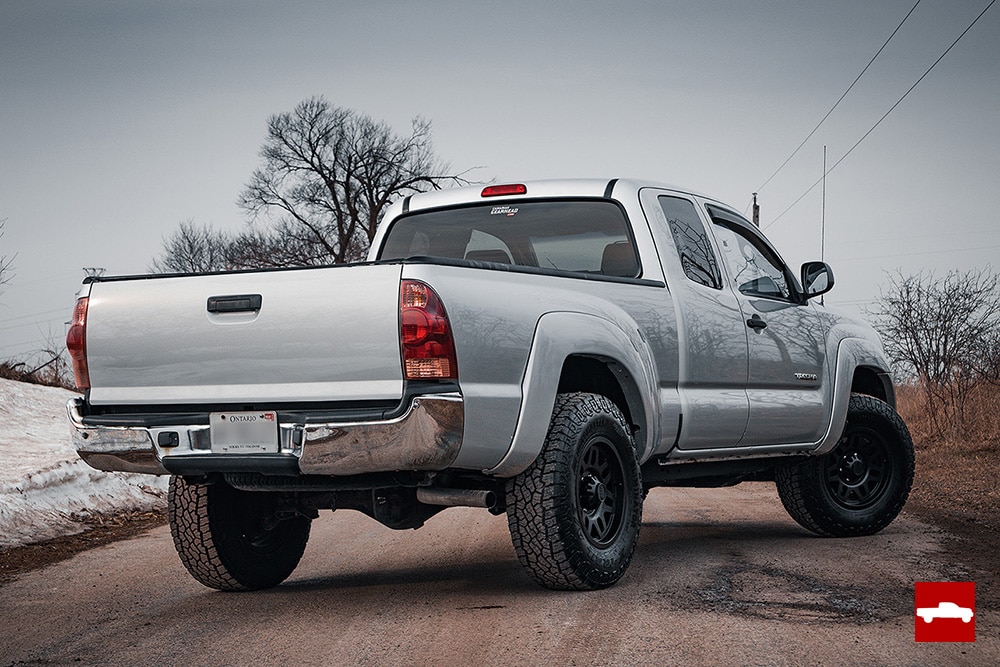
2nd Gen Tacoma final thoughts
You really can’t go wrong with any model year or configuration of the 2nd generation Toyota Tacoma. They’re all built really well and can be considered incredibly reliable.
As with any other Toyota truck, staying on top of maintenance will make them last for a very, very long time. The Tacoma might not be the flashiest or best performing truck, but its dependability is unmatched.

Tim is the creator of Canadian Gearhead. His experience with auto detailing and working for Toyota shows through all of the articles posted here. He runs the Canadian Gearhead site and YouTube channel full-time now and currently owns a 2007 4runner, 2006 Tacoma, and 1991 MR2. Read more about Tim:
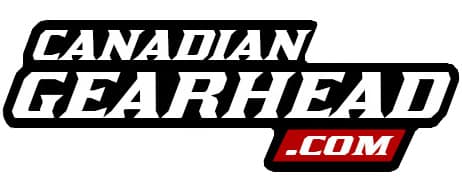
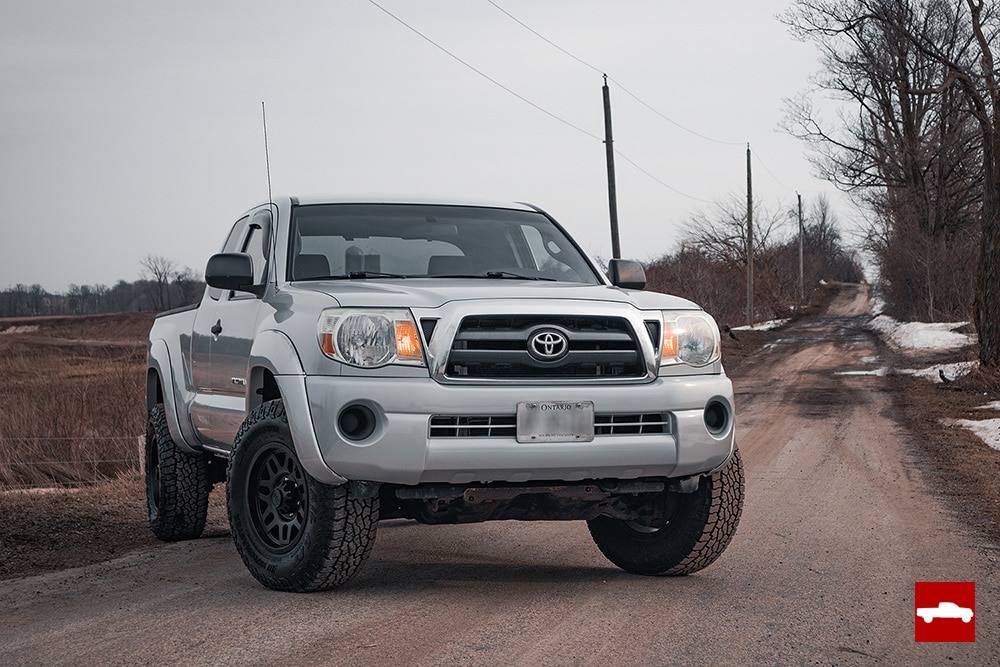
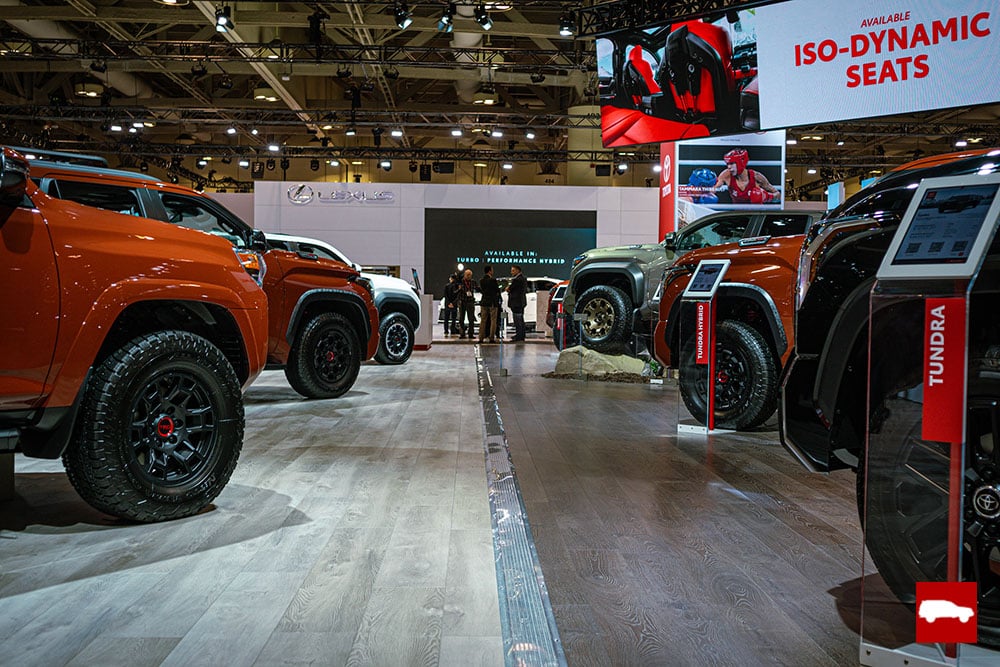
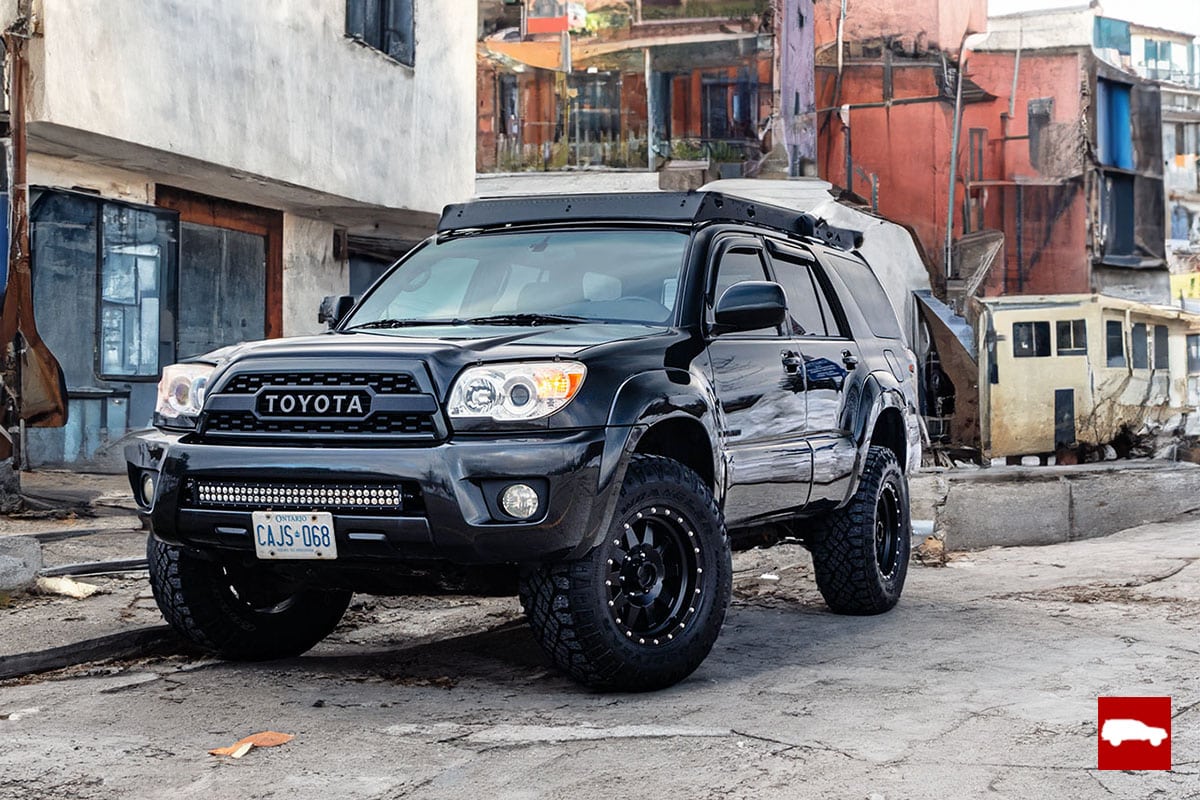
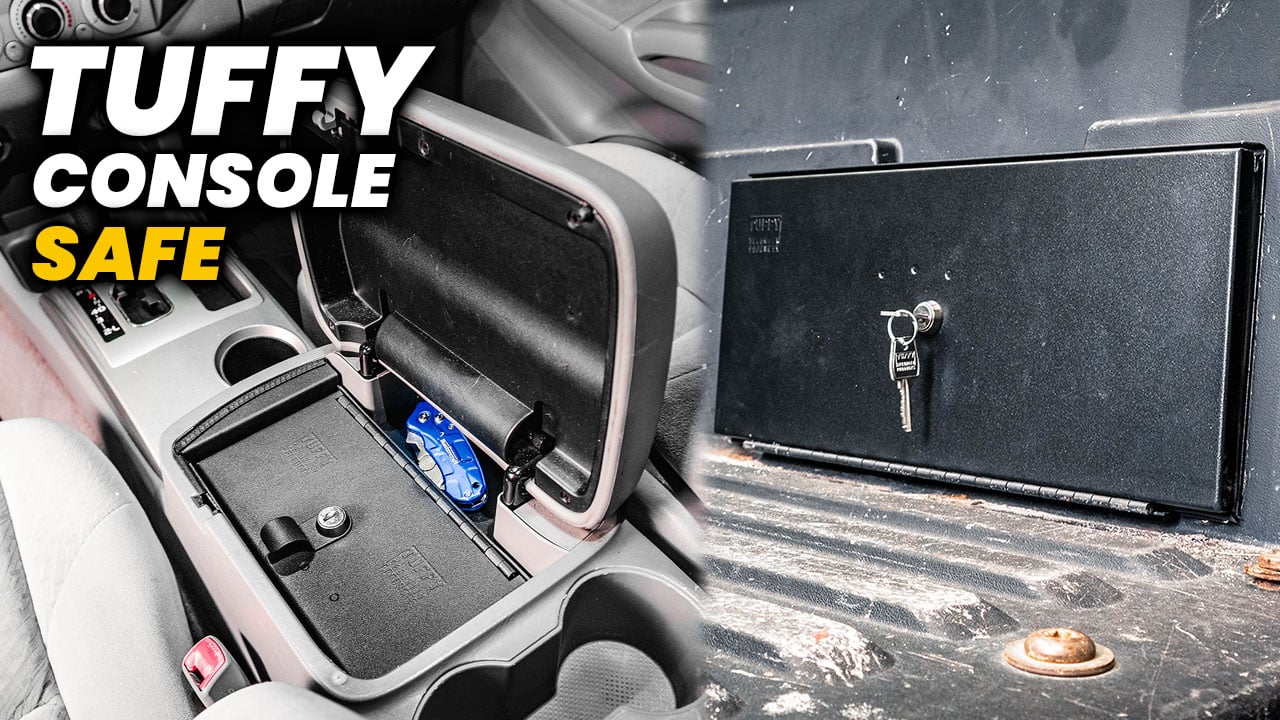
Leave a Reply